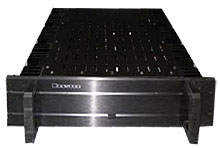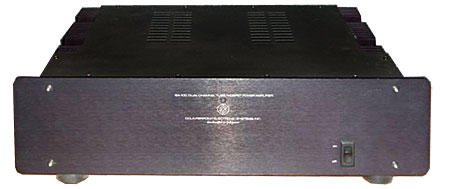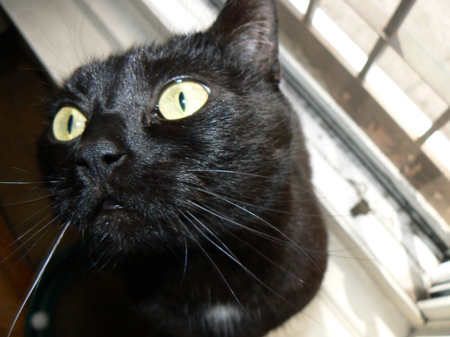LATEST ADDITIONS
Counterpoint SA-100 power amplifier
The $1200 Counterpoint SA-100 amplifier came up to bat fourth in my listening sessions, behind (in order of appearance) the <A HREF="http://www.stereophile.com/solidpoweramps/678">Adcom GFA-555 II</A> (not reviewed here, but sent along by JA for comparison purposes), the <A HREF="http://www.stereophile.com/tubepoweramps/491vtl">VTL Tiny Triode</A> monoblocks, and the <A HREF="http://www.stereophile.com/solidpoweramps/491muse">Muse Model One Hundred</A>. Thus, my progression went from bipolar solid-state to tube to MOSFET, with a wide spread of sonic characteristics between them: stygian bass from the Adcom; uncanny spatial presentation and vocal reproduction from the VTLs; and an overall superior sound from the Muse. I was therefore eager to see where the tube/MOSFET hybrid Counterpoint would fall in this group of very different-sounding amplifiers.
Sumo Polaris II power amplifier
What's in a name? Quite a bit, when you stop and think about it. Would you rather have prostate surgery by Dr. Steadyhand or Dr. Whoops? Names imply a lot, even if we don't consciously make the connection; that's why your Polo shirt was made by Ralph Lauren instead of Ralph Lipshitz.
Duck-Billed Platitudes
Freida Hughes is less than reverent about a Robert Service poem. She's right—the callow lad got bent out of shape when his booty call wasn't the idyll he had imagined.
What's That?
Bagheera's bug huntin'!
Why Is This Cat Laughing?
Because I thought I was the boss of him, that's why.
With a Hey, and a Ho, and a Hey-Nonny-No
"These syllables might be nonsensical, but they are telling and resonant."
So Perfect and Neat and New
My allergies are, as they say, "killing me." Robert says it's <a href="http://www.weather.com/outlook/health/allergies/weather/tenday/10016">t… tree pollen</a>.
Welcome to the CIA Museum
"Housed in the Agency's Headquarters Building in McLean, Virginia, this unique collection illustrates the history of US intelligence—which effectively began when this country was still 13 separate colonies—by showing some of the artifacts and tools used by men and women serving in various aspects of espionage."
Sky Racers
In the 1920s and '30s, fliers would race their home-built and "suicidally overpowered" single engine aircraft—sometimes in front of 60,000 spectators. The Granville Brothers' Gee Bee Model Z was little more than a massive motor with stubby little wings attached, but it paved the way for the fast fighters the Air Corps put aloft in WWII.





